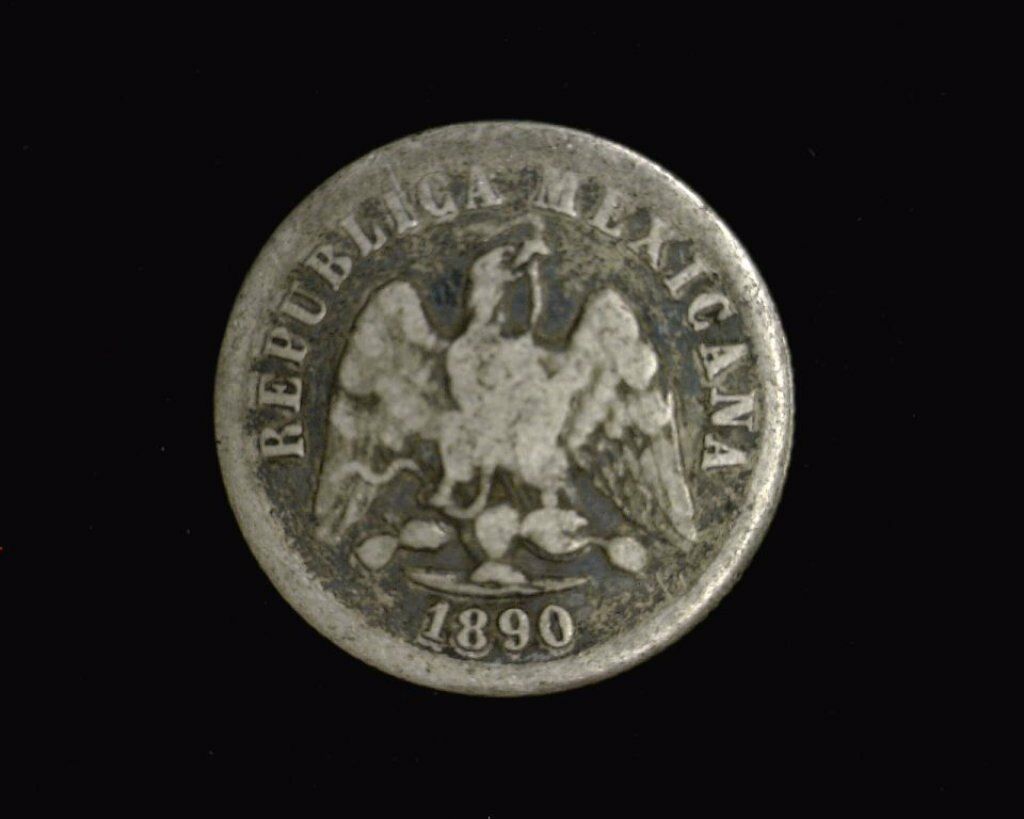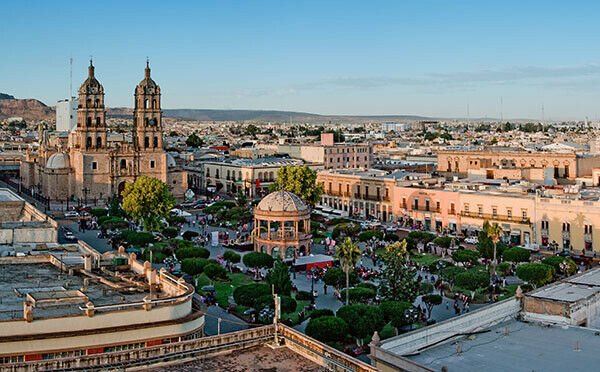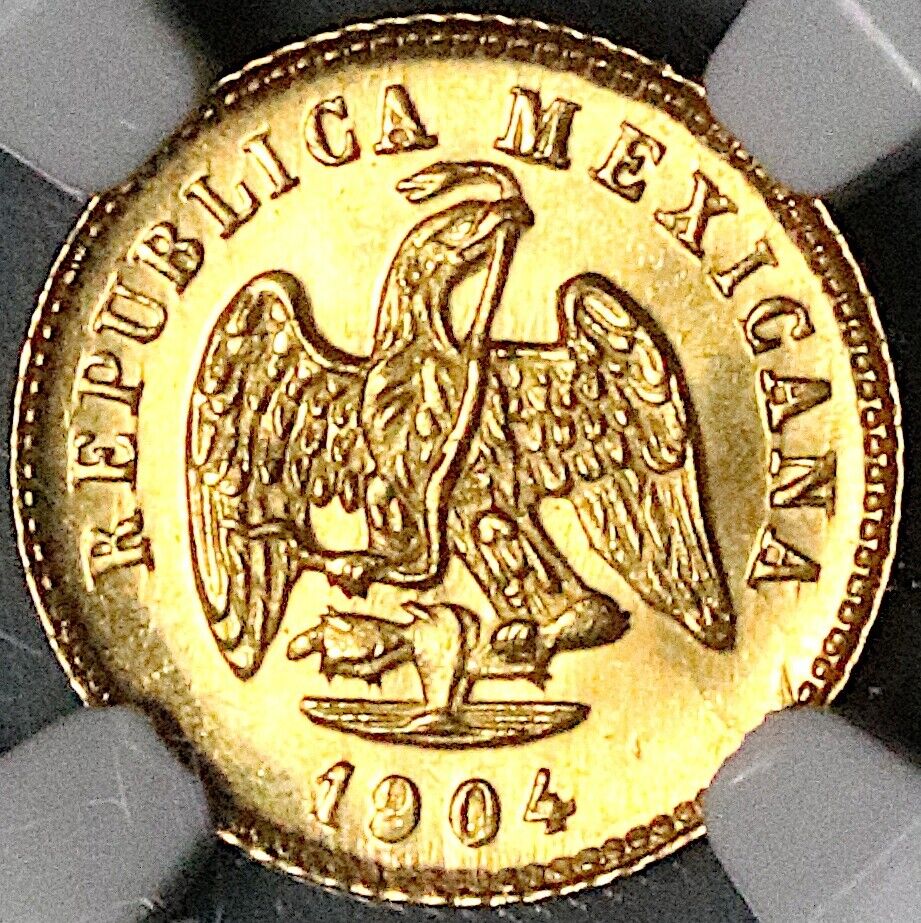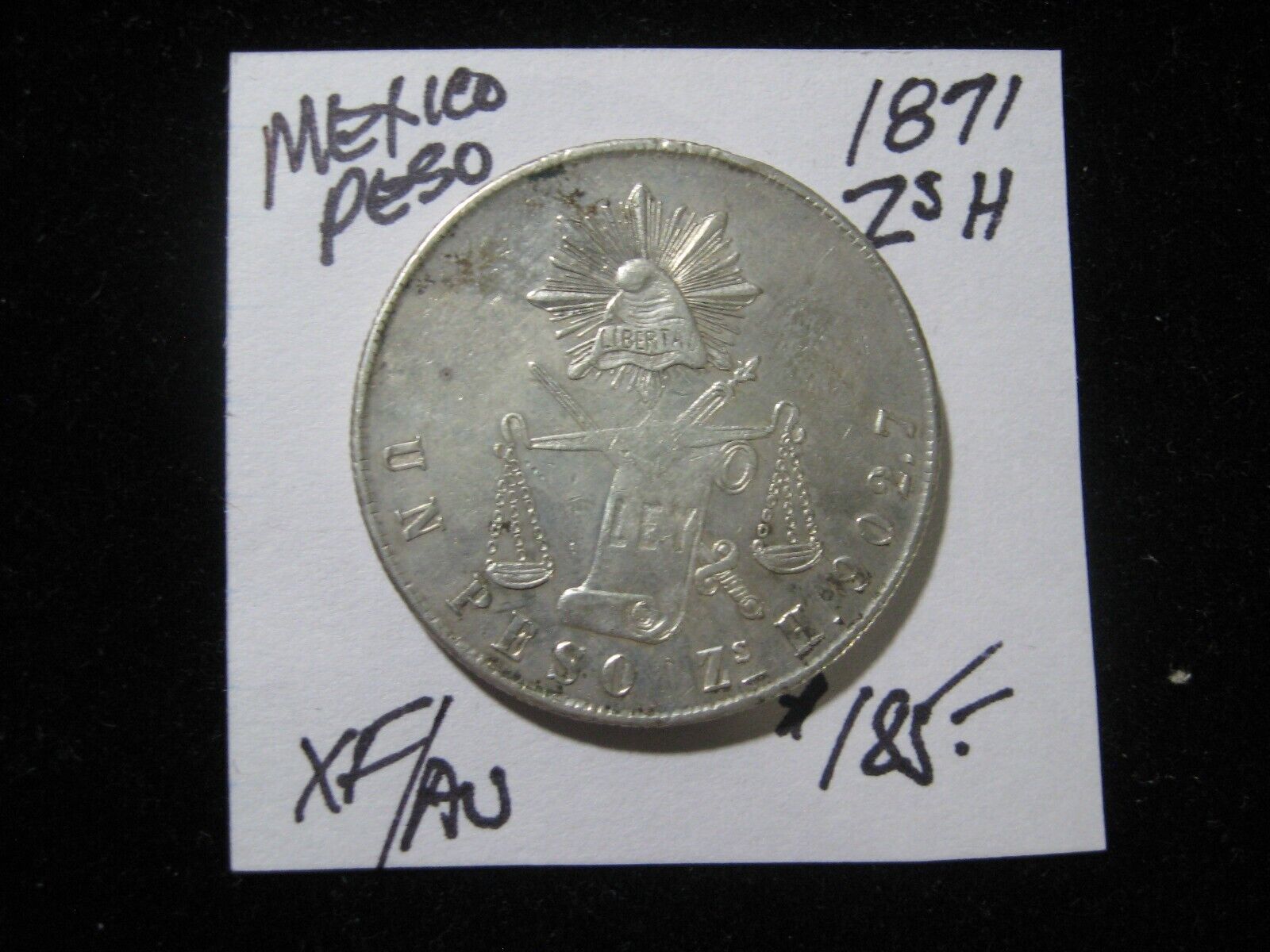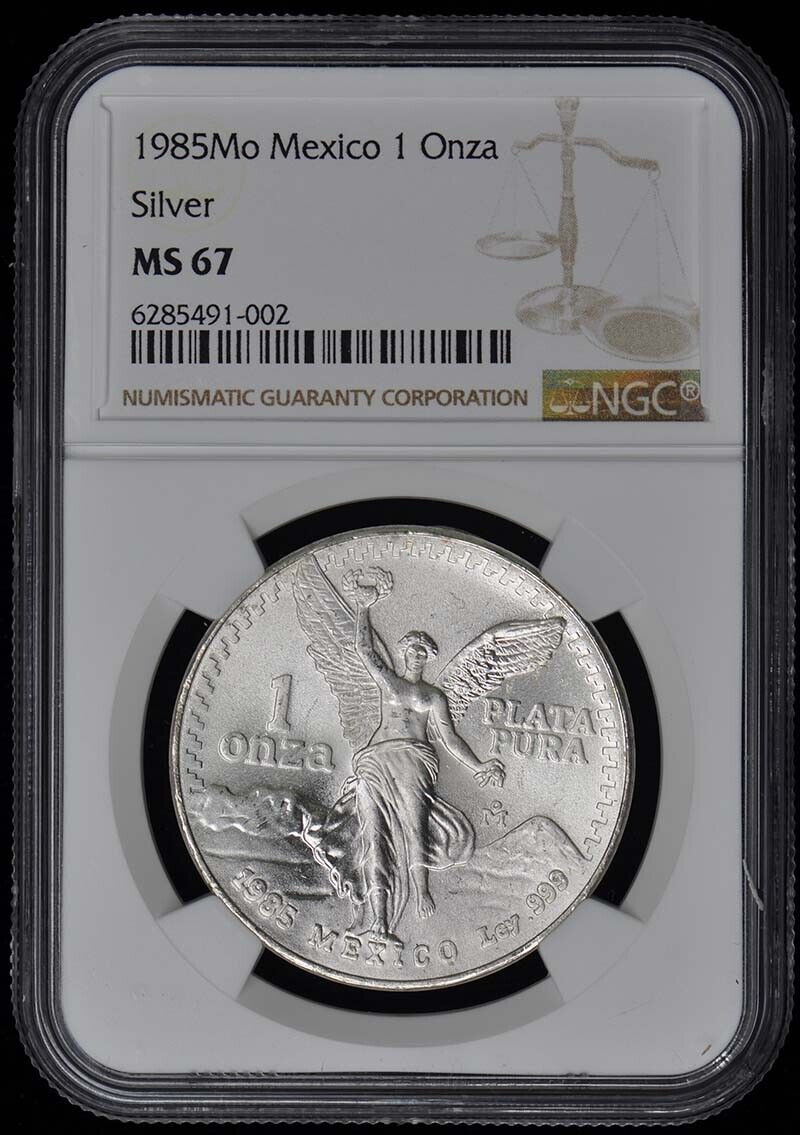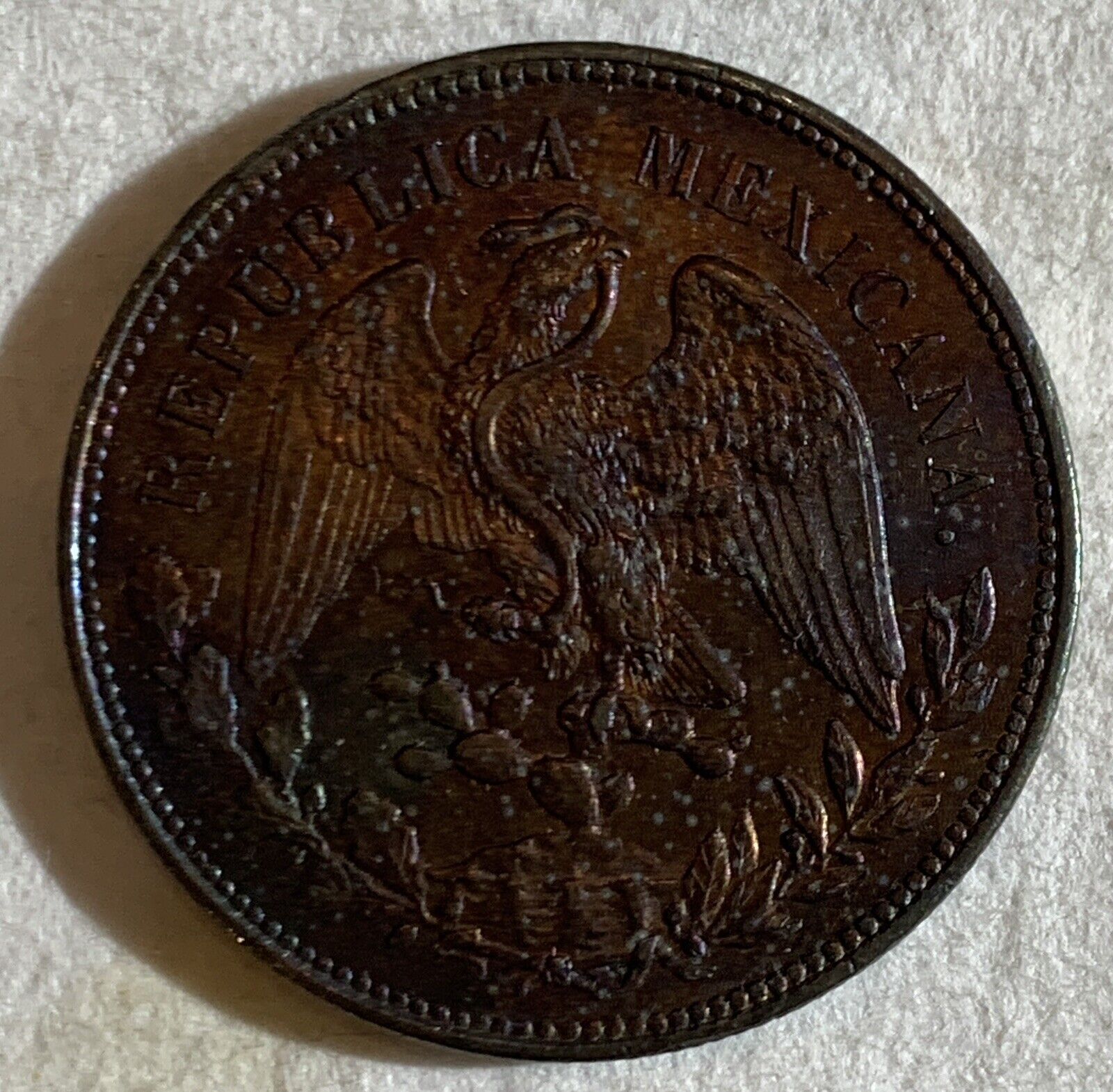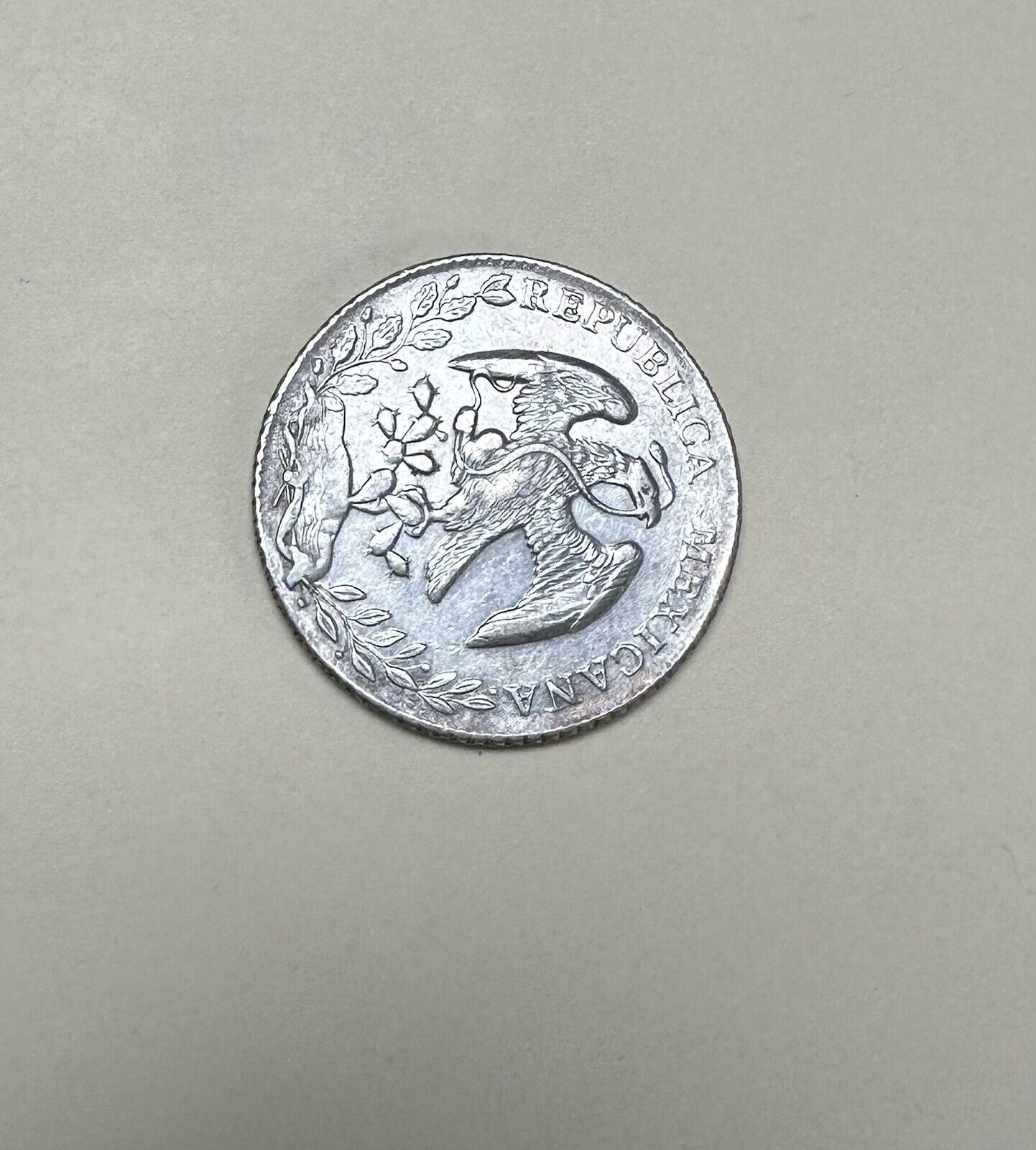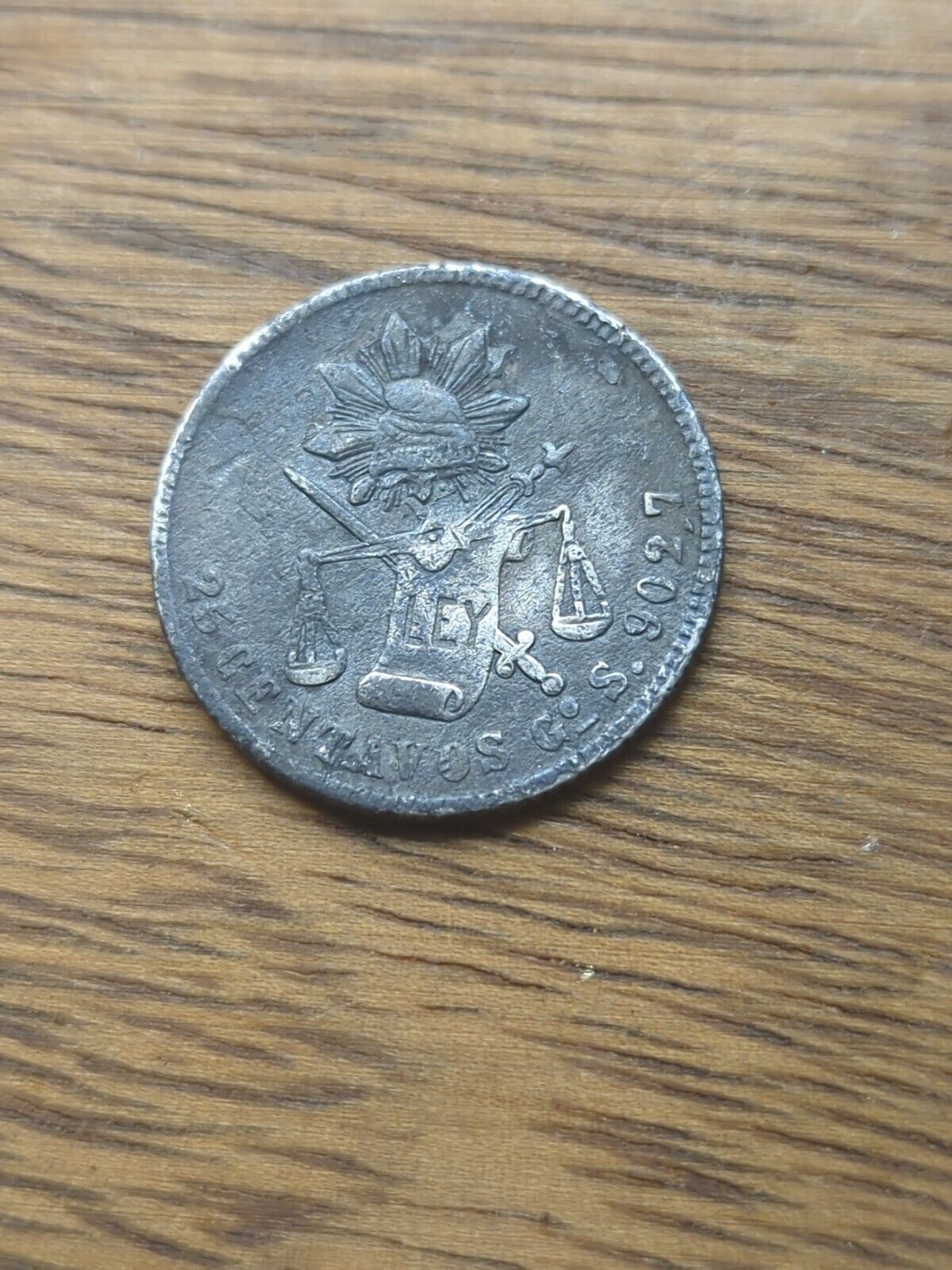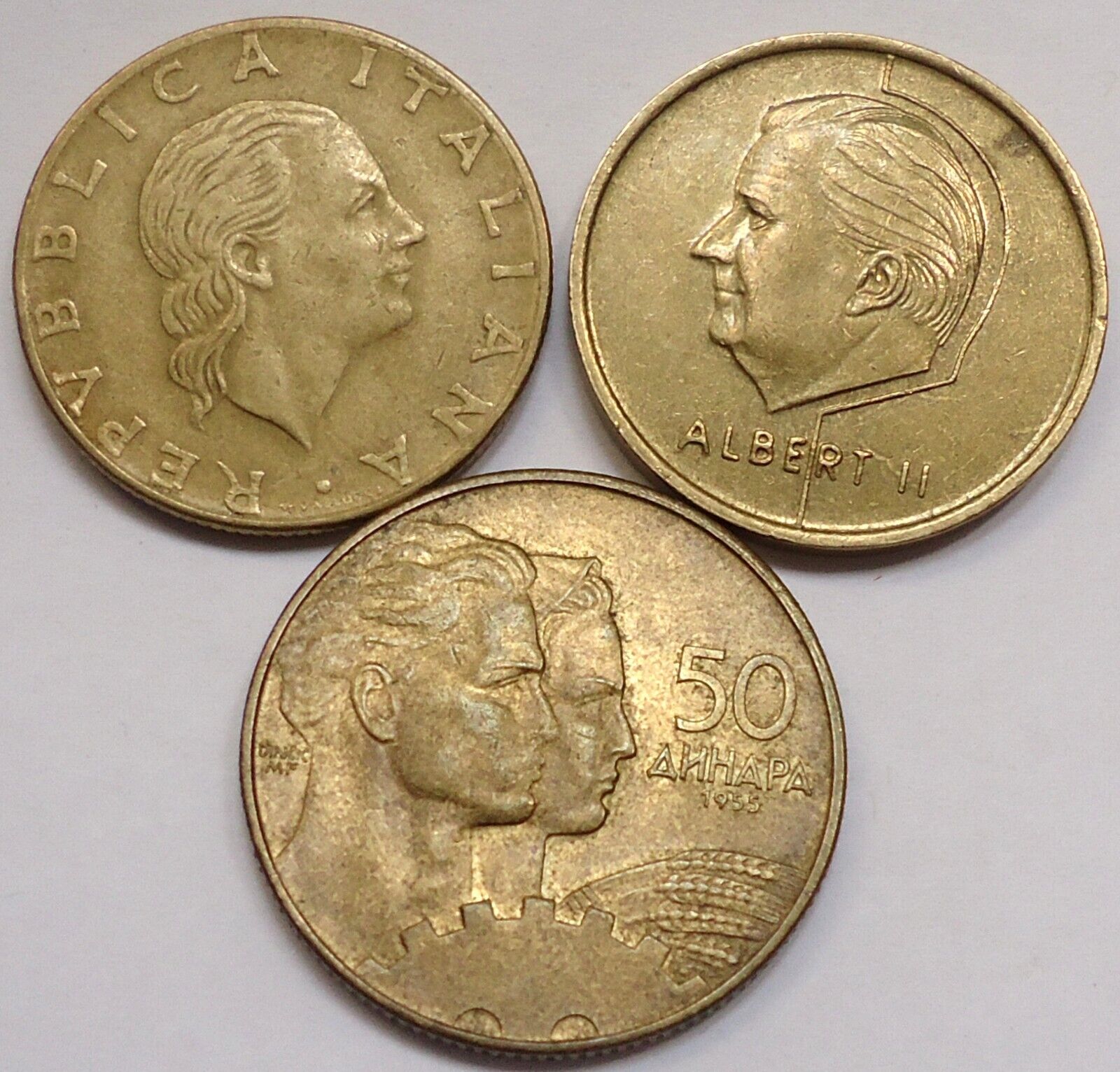-40%
1890 HoG 10 CENTAVOS SILVER MEXICAN COIN 48K MINT ERROR HERMOSILLO SONORA MEXICO
$ 36.37
- Description
- Size Guide
Description
1890 HoG 10 CENTAVOS SILVER MEXICAN COIN 48K LOW MINT HERMOSILLO SONORA MEXICOGREETINGS, FEEL FREE
TO
"SHOP NAKED"
©
We deal in items we believe others will enjoy and want to purchase.
We are not experts.
We welcome any comments, questions, or concerns.
WE ARE TARGETING A GLOBAL MARKET PLACE.
Thanks in advance for your patronage.
Please Be sure to add WDG to your
favorites list
!
1890 HoG
OLD TEN CENTAVOS
REPUBLICA MEXICANA
SECOND REPUBLIC ERA
KM# 403.6
.903 SILVER
LOW - LOW - LOW MINTAGE
48,000
CIRCULATED / WITH WEAR
DOUBLE DIE ERROR
-----------------------
FYI
The history of Mexico, a country located in the southern portion of North America, covers a period of more than three millennia. First populated more than 13,000 years ago, the territory had complex indigenous civilizations before being conquered by the Spanish in the 16th century.
From 1519, the Spaniards absorbed the native peoples into Spain's vast colonial empire, and fused Mexico's long-established Mesoamerican civilizations with European culture. Perhaps nothing better represents this hybrid background than Mexico's languages: the country is both the most populous Spanish-speaking country in the world and home to the largest number of Native American language speakers in North America. For three centuries Mexico was part of the Spanish Empire, whose legacy is a country with a Spanish-speaking, Catholic and largely Western culture.
After a protracted struggle (1810-1821) Mexico declared its independence from Spain in 1821 via the Treaty of Córdoba. A brief period of monarchy (1821–23), called the First Mexican Empire, was followed by the founding of the Republic of Mexico, established under a federal constitution in 1824. Mexico continues to be constituted as a federated republic.
The period of the late 1820s to the early 1850s was dominated by criollo military man turned president Antonio López de Santa Anna. In 1846, the Mexican American War was provoked by the United States, ending two years later with Mexico ceding almost half of its territory via treaty to the United States. Even though Santa Anna bore significant responsibility for the disastrous defeat, he returned to office. He was overthrown by Mexican liberals, ushering in the period of the La Reforma or Liberal Reform. The Constitution of 1857 codified the principles of liberalism in law, especially separation of church and state, equality before the law, that included stripping corporate entities (the Catholic Church and indigenous communities) of special status. The Reform sparked a civil war between liberals defending the constitution and conservatives, who opposed it. The War of the Reform saw the defeat of the conservatives on the battlefield, but conservatives remained strong and took the opportunity to invite foreign intervention against the liberals in order to forward their own cause.
France invaded Mexico (1861), nominally to collect on defaulted loans to the liberal government of Benito Juárez, but it went further and at the invitation of Mexican conservatives seeking to restore monarchy in Mexico set Maximilian I on the Mexican throne. The US was engaged in its own Civil War (1861–65), so did not attempt to block the foreign intervention. Abraham Lincoln consistently supported the Mexican liberals. At the end of the civil war in the US and the triumph of the Union forces, the US actively aided Mexican liberals against Maximilian's regime. France withdrew its support of Maximilian in 1867 and his monarchist rule collapsed in 1867 and Maximilian executed.
With the end of the Second Mexican Empire, the period often called the Restored Republic (1867-1876) brought back Benito Juárez as president. Following his death from a heart attack, Sebastian Lerdo de Tejada succeed him. He was overthrown by liberal military man Porfirio Diaz, who after consolidating power ushered in a period of stability and economic growth. The half-century of economic stagnation and political chaos following independence ended.
Porfirio Díaz held power from 1876-1911, promoting "order and progress" that saw the modernization of the economy and the flow of foreign investment to the country. The period is generally called the Porfiriato, which ended with the outbreak of the Mexican Revolution. Under Díaz, Mexico's industry and infrastructure was modernized by a strong, stable but autocratic central government. Increased tax revenues and better administration brought dramatic improvements in public safety, public health, railways, mining, industry, foreign trade, and national finances.
Although little had been done for the nation's poor, the sparking forces of the Mexican Revolution were elites outside Díaz's inner circle, such as Francisco Madero, a member of one of the richest land owning families in Mexico, plus liberal intellectuals, and industrial labor activists. The fraudulent election of 1910 keeping 80 year old Díaz in power brought opposition elements together, unleashing a 10 year civil war known as the Mexican Revolution (1910–1920). The conflict was not a unified one, but took place mainly in Mexico's north with organized armies of movement under leaders such as Pancho Villa and Alvaro Obregón and in the center of Mexico, particularly the state of Morelos with guerrilla peasants fighting under the leadership of Emiliano Zapata. The war killed a tenth of the nation's population and drove many northern Mexicans across the U.S. border to escape the fighting. The Revolution ended the system of large landed estates, or haciendas that had originated with the Spanish Conquest.
Following the formation in 1929 of the precursor to the center-left Partido Revolucionario Institucional (PRI), this single party controlled national and state politics after 1929, and nationalized the oil industry in the 1930s. Following World War II, where Mexico had been a strong ally of the United States and had benefited significantly by supplying metals to build war materiel as well as guest farm workers, who freed U.S. American men to fight in the two front war. Mexico emerged from World War II with wealth and political stability and unleashed a major period of economic growth, often called the Mexican Miracle. It was organized around the principles of import substitution industrialization, with the creation of many state-owned industrial enterprises. The population grew rapidly and became more urbanized while many others moved to the United States. Mexico's economy was further integrated with the U.S. after the NAFTA agreement began lowering trade barriers in 1994. Seven decades of PRI rule ended in the year 2000 with the election of Vicente Fox of the Partido Acción Nacional (PAN). In the face of extremely violent drug wars, the PRI returned to power in 2012, promising that it had reformed itself.
-----------
The Porfiriato (1876–1910)
The dictatorship of Porfirio Díaz (1876–1911) was dedicated to order—which meant the rule by law and the suppression of violence—and modernization of all aspects of the society and economy. Diaz was an astute politician who built a national base of supporters; to avoid antagonizing Catholics he avoided enforcement of the anticlerical laws (but they remained on the books.) During this period, the country's infrastructure was greatly improved, thanks to increased foreign investment from Britain and the U.S., and a strong, stable central government.
Increased tax revenues and better administration brought dramatic improvements in public safety, public health, railways, mining, industry, foreign trade, and national finances. He modernized the army and suppressed some banditry. After a half-century of stagnation, where per capita income was merely a tenth of the developed nations such as Britain and the U.S., the Mexican economy took off and grew at an annual rate of 2.3% (1877 to 1910), which was quite high by world standards.
Mexico moved from ridicule to international pride. As traditional ways were under challenge, urban Mexicans debated national identity, the rejection of indigenous cultures, the new passion for French culture, and the challenge of creating a modern nation by means of industrialization and scientific modernization.
Order, progress, and dictatorship
In 1876, Lerdo was reelected, defeating Porfirio Díaz. Díaz rebelled against the government with the proclamation of the Plan de Tuxtepec, in which he opposed reelection, in 1876. Díaz managed to overthrow Lerdo, who fled the country, and was named president. Díaz became the new president. Thus began a period of more than 30 years (1876–1911) during which Díaz was Mexico's strong man. He was legally elected president eight times, turning over power once, from 1880 to 1884, to a trusted ally, General Manuel Gonzailez.
This period of relative prosperity and peace is known as the Porfiriato. He remained in power by rigging elections and censoring the press. Possible rivals were destroyed, and popular generals were moved to new areas so they could not build a permanent base of support. Banditry on roads leading to major cities was largely suppressed by the "Rurales", a new police force that he controlled. Banditry remained a major threat in more remote areas, for the Rurales comprised fewer than 1000 men.
The Army was reduced in size from 30,000 to under 20,000 men for such a large country. However the army was modernized, well-trained, and equipped with the latest technology. It was top-heavy with 5,000 officers, many of them elderly but politically well connected veterans of the wars of the 1860s.
The political skills that Díaz used so effectively before 1900 faded, as he and his closest advisers were less open to negotiations with younger leaders. His announcement in 1908 that he would retire in 1911 unleashed a widespread feeling that Díaz was on the way out, and that new coalitions had to be built. He nevertheless ran for reelection and in a show of U.S. support, Díaz and Taft planned a summit in El Paso, Texas, and Ciudad Juárez, Mexico, for October 16, 1909, an historic first meeting between a Mexican and a U.S. president and also the first time an American president would cross the boarder into Mexico. Both sides agreed that the disputed Chamizal strip connecting El Paso to Ciudad Juárez would be considered neutral territory with no flags present during the summit, but the meeting focused attention on this territory and resulted in assassination threats and other serious security concerns. On the day of the summit, Frederick Russell Burnham, the celebrated scout, and Private C.R. Moore, a Texas Ranger, discovered a man holding a concealed palm pistol standing at the El Paso Chamber of Commerce building along the procession route. Burnham and Moore captured and disarmed the assassin within only a few feet of Díaz and Taft. Both presidents were unharmed and the summit was held. At the meeting, Diaz told John Hays Hammond, "Since I am responsible for bringing several billion dollars in foreign investments into my country, I think I should continue in my position until a competent successor is found." Díaz was re-elected after a highly controversial election, but he was overthrown in 1911 and forced into exile in France after Army units rebelled.
Population and public health
Under Díaz, the population grew steadily from 11 million in 1877 to 15 million in 1910. Because of very high infant mortality (22% of new babies died) the life expectancy at birth was only 25.0 years in 1900. Few immigrants arrived. Diaz gave enormous power and prestige to the Superior Health Council, which developed a consistent and assertive strategy using up-to-date international scientific standards. It took control of disease certification; required prompt reporting of disease; and launched campaigns against tropical disease such as yellow fever.
Economy
Fiscal stability was achieved by José Yves Limantour (1854–1935) Secretary of the Finance of Mexico from 1893 until 1910. He was the leader of the well-educated technocrats known as Científicos, who were committed to modernity and sound finance. Limantour expanded foreign investment, supported free trade, and balanced the budget for the first time and generated a budget surplus by 1894. However, he was unable to halt the rising cost of food, which alienated the poor.
The American Panic of 1907 was an economic downturn that caused a sudden drop in demand for Mexican copper, silver, gold, zinc, and other metals. Mexico in turn cut its imports of horses and mules, mining machinery, and railroad supplies. The result was an economic depression in Mexico in 1908–09 that soured optimism and raised the level of discontent with the Diaz regime, thus helping to set the stage for revolution in 1910.
Mexico was vulnerable to external shocks because of its weak banking system. The banking system was controlled by a small oligarchy, which typically made long-term loans to their own directors. The banks were the financial arms of extended kinship-based business coalitions that used banks to raise additional capital to expand enterprises. Economic growth was largely based on trade with the United States.
Mexico had few factories by 1880, but then industrialization took hold in the Northeast, especially in Monterrey. Factories produced machinery, textiles and beer, while smelters processed ores. Convenient rail links with the nearby U.S. gave local entrepreneurs from seven wealthy merchant families a competitive advantage over more distant cities. New federal laws in 1884 and 1887 allowed corporations to be more flexible. By the 1920s American Smelting and Refining Company (ASARCO), an American firm controlled by the Guggenheim family, had invested over 20 million pesos and employed nearly two thousand workers smelting copper and making wire to meet the demand for electrical wiring in the U.S. and Mexico.
(THIS PICTURE FOR DISPLAY ONLY)
---------------------------
Thanks for choosing this auction. You may email for alternate payment arrangements. We combine shipping. Please pay promptly after the auction. The item will be shipped upon receipt of funds. WE ARE GOING GREEN, SO WE DO SOMETIMES USE CLEAN RECYCLED MATERIALS TO SHIP. DO NOT BE TOO PERSNICKETY.
Please leave feedback when you have received the item and are satisfied. Please respond when you have received the item.
*****
5*'s
*****
If you were pleased with this transaction, please respond with all 5 stars! If you are not pleased, let us know via e-mail. Our goal is for 5-star service. We want you to be a satisfied, return customer.
Please express any concerns or questions. More pictures are available upon request. The winning bid will incur the cost of S/H INSURED FEDEX OR USPS. See rate calculator or email FOR ESTIMATE. International Bidders are Welcome but be mindful if your country is excluded from safe shipping.
Thanks for perusing
THIS
and
ALL
our auctions.
Please Check out our
other items
!
WE like the curious and odd.
BUY, BYE!!
Track Page Views With
Auctiva's FREE Counter
